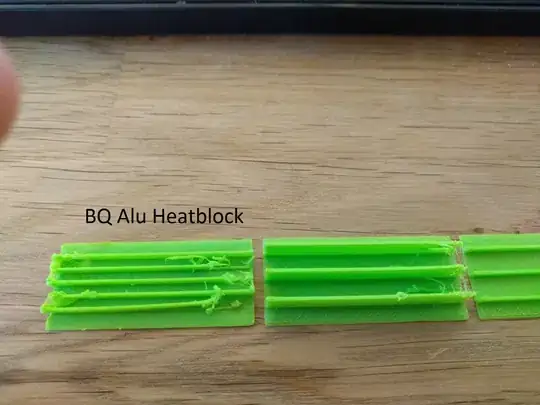I came across several issues which seem to have been lowered. Firstly, I changed from a 0.4 to a 0.5 mm nozzle. Because of the backpressure I was not able to print my PETG (Colorfabb XT filament) below 270°C which caused unresolvable oozing. After that I was able to extrude till 230°C.
The left print below shows the result. I disassembled the hotend, there was no leak or whatsoever. Maybe it was too cold for printing. However, the temperature displayed was 250°C. Then I replaced the cheap aluminum heat block with a copper alloy based one. After that my PIDs did not work anymore. I had to greatly enhance the d-term, otherwise there was a big overshoot. Guess there was a serious heat conducting issue with the old BQ hotend.
Anyway, from there it became better. However, I noticed that I still have severe underextrusion after travel moves (second piece, first picture, first piece, second picture). I use Cura, so I activated retraction with the feature to prime after travel moves. I got the wall closed just after 0.35 mm³.
My Question: Is this underextrusion after travel moves normal for PETG/XT? I did not discover such behavior with PLA or ABS in the past.
Current Site Advice: Despite the weight, copper heat blocks seem to be worth the upgrade.

